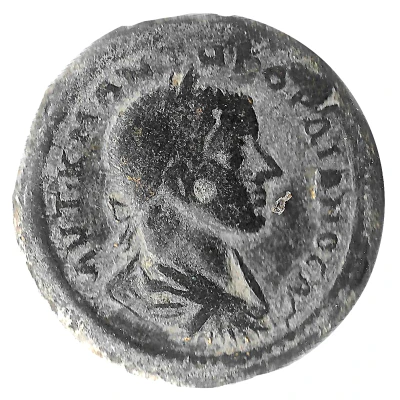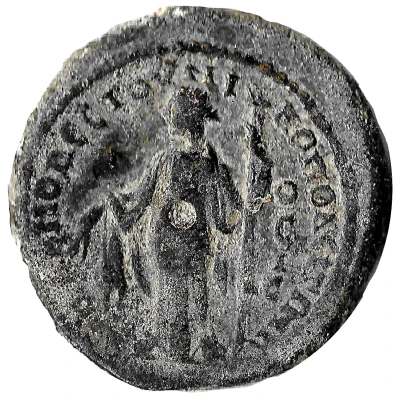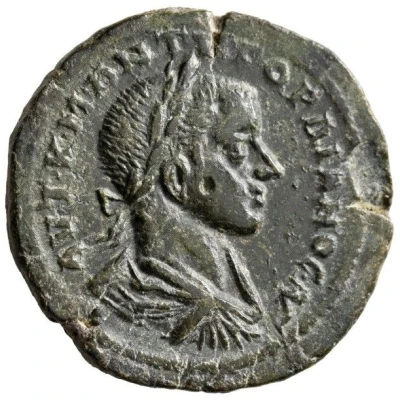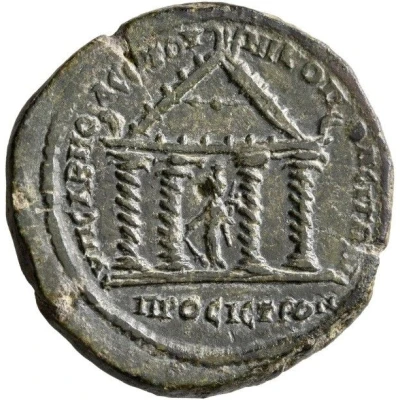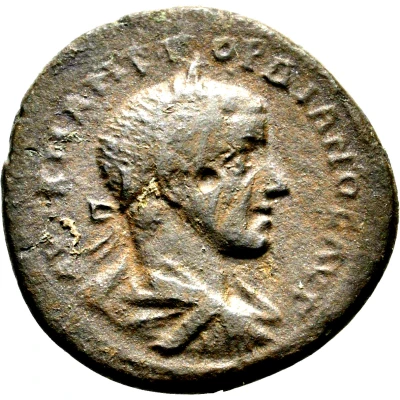
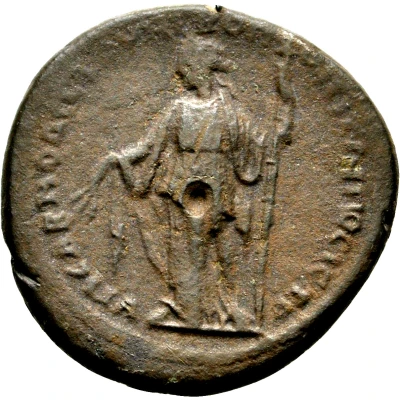

Tetrassaria - Gordianus III ΥΠ CΑΒ ΜΟΔΕCΤΟΥ ΝΙΚΟΠΟΛΕΙΤΩΝ ΠΡΟC ΙCΤΡON; Consular Legate Sabinius Modestus; Nicopolis ad Istrum
| Bronze | 12 g | 28 mm |
| Issuer | Nicopolis ad Istrum (Moesia Inferior) |
|---|---|
| Emperor | Gordian III (Marcus Antonius Gordianus) (238-244) |
| Type | Standard circulation coin |
| Years | 241-244 |
| Value | Tetrassarion (0.4) |
| Currency | Drachm |
| Composition | Bronze |
| Weight | 12 g |
| Diameter | 28 mm |
| Shape | Round (irregular) |
| Technique | Hammered |
| Orientation | Variable alignment ↺ |
| Demonetized | Yes |
| Updated | 2024-10-06 |
| Numista | N#108830 |
|---|---|
| Rarity index | 97% |
Reverse
Demeter standing left, holding grain ears and torch.
Script: Greek
Lettering: ΥΠ CΑΒ ΜΟΔΕCΤΟΥ ΝΙΚΟΠΟΛΕΙΤΩΝ ΠΡΟC ΙCΤΡON
Translation: "(Consular Legate) Sabinius Modestus, Nicopolis ad Istrum"
Interesting fact
One interesting fact about this coin is that it features a rare combination of symbols and letters that provide insight into the political and cultural context of the Roman Empire during the 3rd century AD. The coin's obverse side features the image of Gordianus III, while the reverse side features a depiction of the goddess Victoria and the legend "ΥΠ CΑΒ ΜΟΔΕCΤΟΥ ΝΙΚΟΠΟΛΕΙΤΩΝ ΠΡΟC ΙCΤΡON" (Consular Legate Sabinius Modestus; Nicopolis ad Istrum), indicating that the coin was issued during Gordianus III's reign (241-244 AD) and that it was minted in Nicopolis ad Istrum, a city in the Roman province of Moesia Inferior. The use of both Latin and Greek letters and symbols on the coin highlights the cultural diversity of the Roman Empire at the time. Additionally, the coin's bronze composition and relatively low weight suggest that it was intended for everyday use by common people, providing a glimpse into the economic and social dynamics of the empire during this period.
